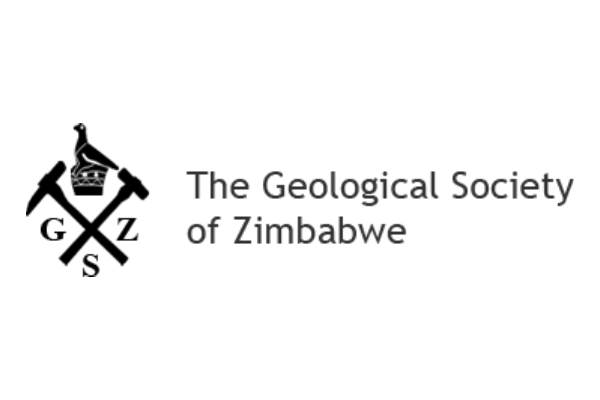Topics surrounding ancient Earth and plate tectonics, mineral exploration and resource development, as well as geological heritage and education, were key highlights at this year’s Geological Society of Zimbabwe (GSZ) Summer Symposium and MacGregor Memorial Lecture. The event was held at the Natural History Museum of Zimbabwe in Bulawayo.
By Rudairo Mapuranga
The symposium opened with a presentation from Judith Kinnaird on economically important pegmatites in Africa. Dr. Kinnaird discussed the widespread distribution of pegmatite deposits across Africa, identifying regions with significant economic potential. She highlighted Zimbabwe as a country with vast reserves of lithium-bearing pegmatites, particularly in areas such as Bikita, Kamativi, and Zulu.
“The Bikita pegmatite deposit, which has been mined for over 60 years, remains one of the world’s largest known sources of lithium,” she noted. Dr Kinnaird further explained that Zimbabwe’s pegmatites are rich in tantalum, tin, and other rare earth elements, making them valuable not only for lithium extraction but also for a wide range of industrial applications.
Beyond Zimbabwe, Dr Kinnaird pointed to significant pegmatite deposits in other African countries, such as the Democratic Republic of Congo, Namibia, and Mozambique. For example, the Manono-Kitotolo pegmatite deposit in the DRC is one of the world’s largest pegmatite-hosted lithium deposits, attracting considerable interest from international mining companies. Likewise, Namibia’s Karibib district and Mozambique’s Alto Ligonha pegmatite fields were identified as important sources of lithium, tantalum, and other critical minerals.
A presentation by Godfrey S. Chagondah, Mbongeni Manyere, and Peter T. Zizhou explored the geology and mineralization of the Gwanda Greenstone Belt (GGB), focusing on structural controls and alteration patterns crucial for successful mineral exploration in Zimbabwe. They provided a detailed examination of the belt, located in the southwestern part of the Archaean granite-greenstone Zimbabwe Craton and known for hosting orogenic Au-Ag deposits. The GGB is one of Zimbabwe’s most productive greenstone belts, and the presentation emphasized the importance of understanding structural and lithological controls in mineral exploration.
Another highlight related to mineral exploration and resource development was presented by William Collett. His presentation showcased the Dokwe Gold Project, which demonstrated how innovative exploration techniques are leading to new discoveries in under-explored areas like Tsholotsho. The Dokwe Gold Project represents a significant greenfield discovery within a previously unexplored Archaean Greenstone Belt in Zimbabwe, underscoring the potential for new exploration successes in under-explored regions. Collett emphasized how modern exploration techniques, such as geochemical and geophysical analysis, have been crucial in unlocking the region’s mineral potential.
Ancient Earth and Plate Tectonics
Mark Tsomondo presented evidence suggesting that modern-style plate tectonics may have been active as early as the Mesoarchean, using data from the Kaapvaal Craton and the Limpopo Orogen. His findings offer new insights into early tectonic activity on Earth, significantly contributing to the understanding of ancient geological processes. Tsomondo’s research explored how tectonic activity in southern Africa, including the Swazi ribbon continent and the Aegean-like Kaapvaal orocline, paralleled modern plate tectonics with convergent, divergent, and transform boundaries during the Mesoarchean era. His detailed analysis of geological and geophysical datasets provided a deeper understanding of tectonic movements in the absence of preserved Archean oceanic lithosphere.
In another presentation, Senamile S. Dumisa, represented by Paul Nex, shed light on ancient magmatic processes with her research on the petrogenesis of orbicular granites in the Diana’s Pool area. Her work contributed to the understanding of Zimbabwe’s unique rock formations, highlighting the role of magmatism in shaping the country’s geological landscape.
Geological Heritage and Education
Forbes Mugumbate highlighted the significance of the Limpopo Mobile Belt as a key geological heritage site. He underscored its importance for understanding Earth’s ancient tectonic history and its role in educating future geoscientists. His presentation emphasized the need to preserve geological heritage as a way to foster a greater understanding of Earth’s evolutionary processes.
Tony Martin contributed valuable observations on the Dwars River Chromitite seams and a nearby breccia pipe within the Bushveld Igneous Complex. His research provided further insights into the ancient magmatic processes that shaped the region, enhancing the understanding of the chromite-rich formations within this significant geological structure.
Conclusion
The symposium underscored the essential role of geology in understanding Earth’s past, present, and future. It highlighted the importance of continued research and exploration in unlocking Earth’s resources and preserving its geological heritage. As global demand for critical minerals and energy resources increases, the research and exploration efforts discussed at the symposium will play a pivotal role in addressing these challenges. The insights gained from this gathering will undoubtedly contribute to future advancements in geological sciences and resource development.
.png)




